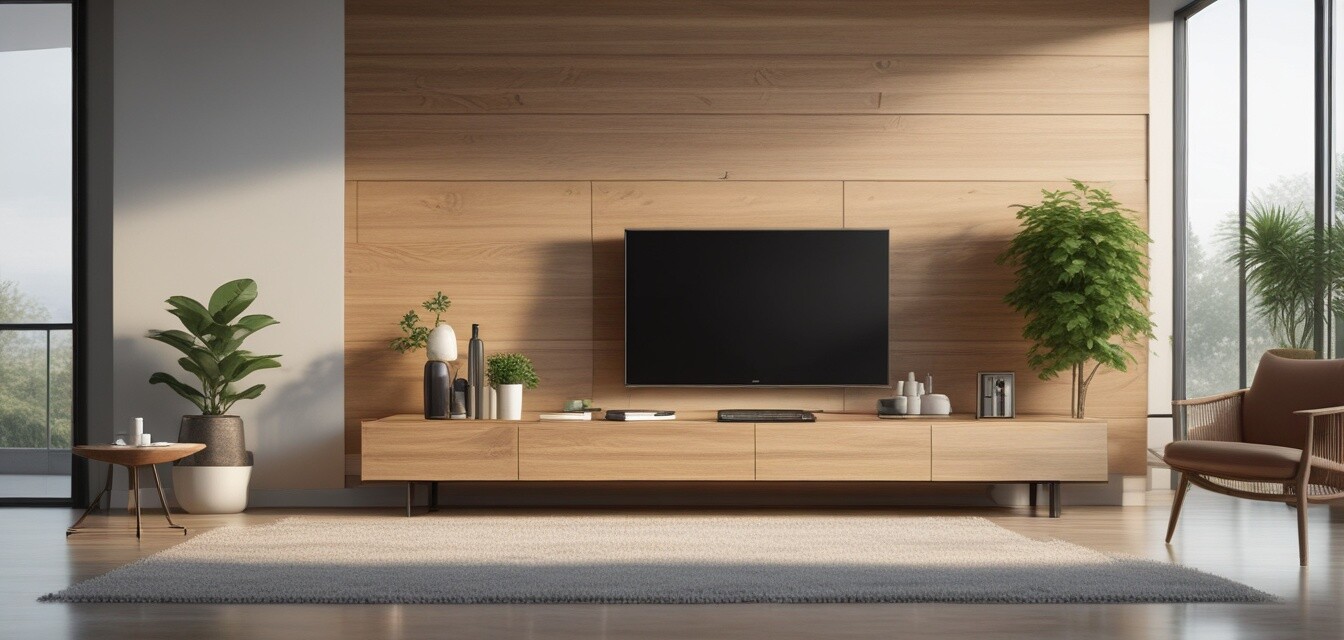
How Eco-Friendly Practices Are Changing the Furniture Industry
Key Takeaways
- Sustainable practices in furniture manufacturing are gaining momentum.
- Innovative materials, such as bamboo and reclaimed wood, are trending.
- Consumers are prioritizing eco-friendly TV stands and furniture.
- Regenerative manufacturing processes are becoming standard.
- Transparency in sourcing materials is crucial for consumer trust.
The furniture industry has seen significant changes in recent years, particularly with the rising demand for sustainable practices. As more consumers become environmentally conscious, manufacturers are responding by adopting eco-friendly methods, especially for items like TV stands.
Understanding eco-friendly practices
Eco-friendly practices refer to methods that minimize harm to the environment during the production and disposal of furniture. These practices can encompass a wide range of strategies, from sourcing sustainable materials to employing energy-efficient manufacturing methods.
Materials That Make a Difference
One of the most significant impacts of eco-friendly practices is the type of materials used. Here’s a look at some commonly used sustainable materials:
| Material | Description | Environmental Benefit |
|---|---|---|
| Bamboo | A fast-growing grass that is strong and lightweight. | Renewable resource, reduces deforestation. |
| Reclaimed wood | Wood that has been salvaged from old buildings and furniture. | Reduces waste and preserves forest resources. |
| Recycled metals | Metals repurposed from old furniture or construction materials. | Less energy-intensive than producing new metals. |
| Organic fabrics | Fabrics made from organic cotton or hemp without harsh chemicals. | Reduces water pollution and uses fewer pesticides. |
Trends in Sustainable Furniture
As consumers increasingly opt for eco-friendly options, various trends are emerging in the furniture industry, particularly in the realm of TV stands. Here are some notable trends:
- **Modular designs:** These allow consumers to customize their furniture, reducing waste by adapting over time.
- **Multi-functional furniture:** Combining functions to minimize the need for additional pieces helps reduce overall consumption.
- **Minimalist aesthetics:** Simple designs often require fewer materials and promote a timeless appeal.
- **Natural finishes:** Using low-emission paints and finishes helps create safer indoor air quality.
The Impact of Consumer Demand
The shift in consumer preferences is a key factor driving the adoption of sustainable practices in the furniture industry. More consumers are researching products before purchasing, often seeking out eco-friendly labels. Some shifts include:
| Consumer Behavior | Traditional Approach | Sustainable Approach |
|---|---|---|
| Prioritizing appearance | Focus on style over sustainability. | Look for appealing designs that are also eco-friendly. |
| Brand loyalty | Purchase based on brand name only. | Choose brands that are transparent about their sustainable practices. |
| Price sensitivity | Preference for low-cost options, regardless of materials. | Willing to invest more in durable, sustainable products. |
Manufacturers Responding to Change
Furniture manufacturers are adapting their operations to meet the growing demand for sustainable products. Some key strategies include:
- **Sourcing renewable materials:** Ensuring raw materials come from sustainable sources.
- **Implementing circular production processes:** Designing furniture for recycling or upcycling at the end of its life.
- **Investing in sustainable technology:** Using equipment that minimizes energy consumption and waste.
- **Educating consumers:** Providing information on the benefits of sustainable furniture choices.
Challenges in Implementation
While the move towards sustainability in the furniture industry is promising, challenges remain:
- **Higher initial costs:** Sustainable materials and practices can often be more expensive.
- **Consumer awareness:** Not all consumers understand the benefits of eco-friendly furniture.
- **Supply chain complexities:** Sourcing sustainable materials can be challenging.
Tips for Choosing Eco-Friendly Furniture
- Look for certifications like FSC (Forest Stewardship Council) for wood products.
- Check for low-VOC finishes to reduce indoor air pollution.
- Consider the lifecycle of the product, from materials to disposal.
- Research the brand's sustainability practices and transparency.
- Explore options like wooden TV stands made from reclaimed wood.
Pros
- Promotes a healthier living environment.
- Reduces environmental impact and waste.
- Often features unique and creative designs.
Cons
- Can be more expensive than traditional options.
- Availability may vary based on location and brands.
Conclusion
The furniture industry is in the midst of a significant transformation as sustainability takes center stage. Manufacturers are responding to consumer demands by adopting eco-friendly practices that not only benefit the environment but also cater to a growing desire for stylish and responsible living. As new trends emerge, eco-friendly TV stands and furniture will undoubtedly play a key role in shaping our homes in the years to come. To explore a variety of sustainable furniture options, be sure to check out our comprehensive guide on entertainment consoles.